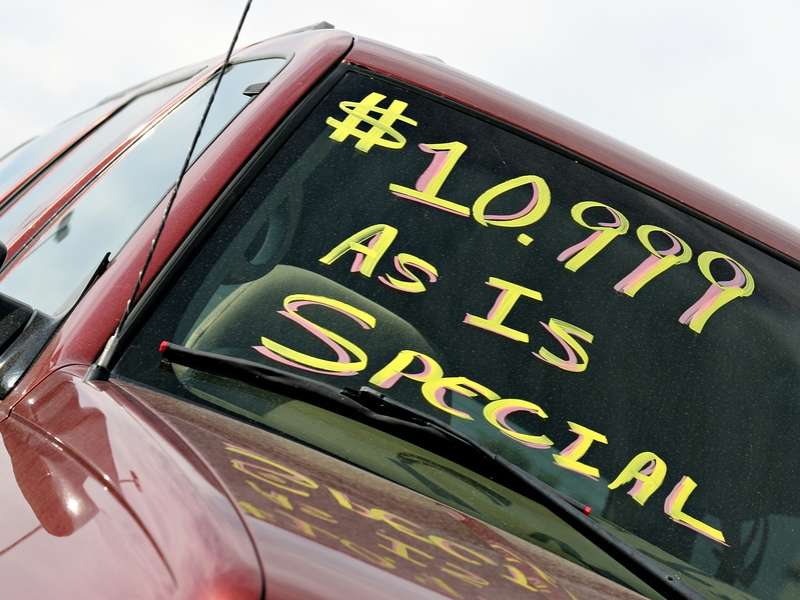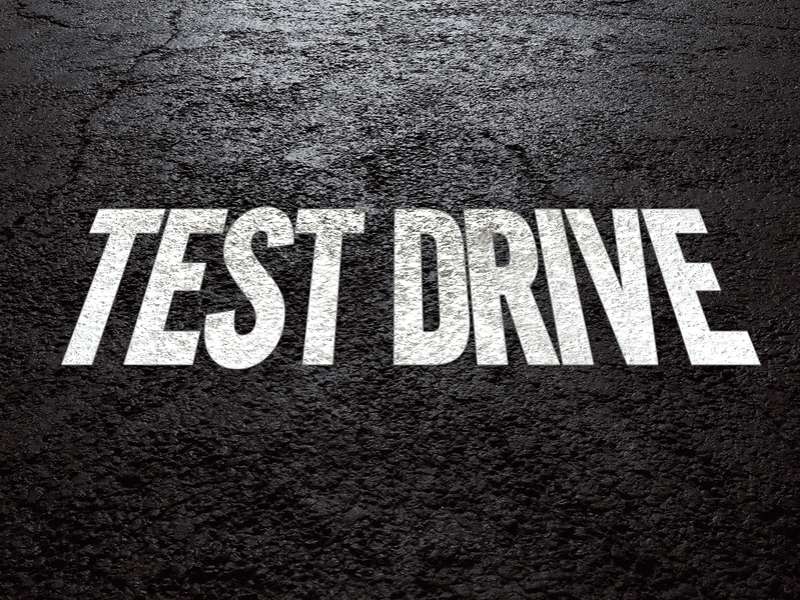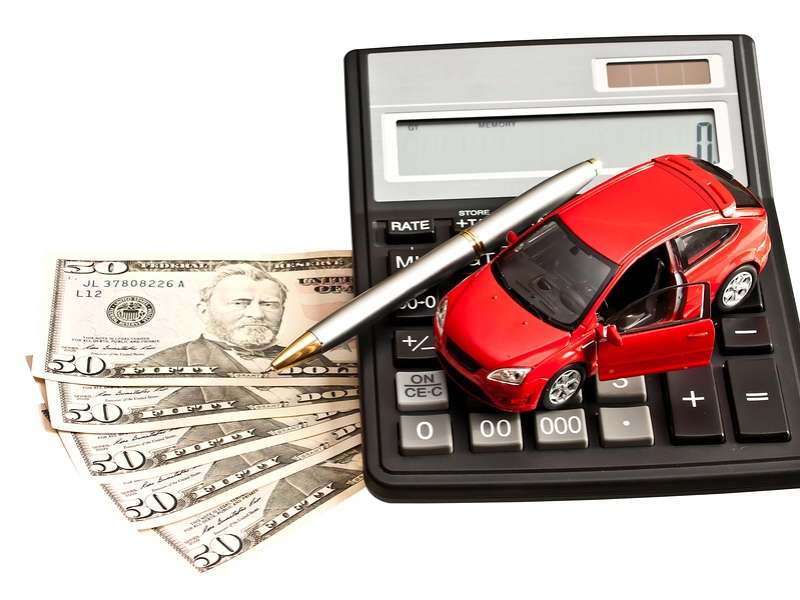Recent Articles
Popular Makes
Body Types
How to Sell a Used Car

One of the indisputable facts of buying a car is that whatever a dealer offers you for your trade-in will be considerably less than you'd get if you sold it yourself. As a trade-in, the dealer has to purchase the car from you at a price that would enable the reselling of the car at a profit. This means, the best a dealer can offer you is the wholesale value of your trade-in.
However, if you sell the car yourself, you'll get closer to the retail price for the car, netting you considerably more cash. Of course, to get more cash, you'll have to take on more responsibility and do more work as well. But it isn't the insurmountable task most people imagine it to be. Following these tips, you'll sell your car safely and at the best price you can possibly get for it.
Perception is reality in the marketplace; therefore your first step is to do everything you can to make your car as attractive as possible to a potential buyer. If you've read our Used Car Red Flags series of articles then you know the more you do to make your vehicle look well cared for, the better shot you have at selling it. So before you do anything else, detail the car, or take it to a detailer for a very thorough cleaning. In a buyer's mind, a dirty car is a poorly maintained car, so this step is very important to maximizing the price you get. Don't just stop with the exterior: clean the interior, the trunk, all the storage areas, under the seats, and have the engine steam cleaned as well.
How does your windshield look, it is pitted, does it have scratches? How about the bodywork? Dents and scratches will count against you; mobile dent repair outfits can typically take care of minor dings in very little time, often for less than $200. Make sure the tires are properly balanced so the car rolls smoothly when it's test-driven. The tires should have good tread left on them too. Additionally, you'll want to have the car inspected by a trusted professional mechanic familiar with the car'”ideally the one that's been servicing the car for you'”so you don't get any surprises when a potential buyer has the car inspected.
If you bought the car used and neglected to do so, you should run a vehicle history report before offering the car to avoid any surprises that might pop up when your customer (who has read and is following our buyer's advice) orders one. The last thing you want to have to deal with in the middle of a price negotiation is a VHR that pops up out of nowhere'”showing you're actually the fourth owner of the car and it has a salvage title.
When it comes to setting a price for your car, you want to price it attractively while keeping in mind anybody interested in buying it is probably going to expect to haggle over it a bit. That said, you have to price the car reasonably enough to make the phone ring, while leaving yourself enough room to come down on the price, while still getting what you need out of the car. Our car valuation partner, Kelley Blue Book, offers pricing based on the car's condition, geographic location and mileage. These, of course, are guidelines. The price you ultimately decide to set is totally up to you. However, the more reasonable you are in your pricing, the better the likelihood you will achieve a quick sell.
Next, we'll cover where and how to advertise, how to conduct a test drive, how to haggle, and the forms you'll need to file with the DMV to transfer ownership.
How to Sell a Used Car Part Two: How To Advertise
In Part One of this series, we discussed the importance of putting the car's best face forward when it's time to sell. We also covered the importance of running a vehicle history report, as well as how to determine the price at which you'll offer the car for sale. In this part, we'll cover where and how to advertise.
Where you advertise your used car can make all the difference in the world, both in terms of the number of potential buyers you attract and the final price you get for the car. However, before you decide where to advertise, your first step, after getting the car detailed, should be to photograph it extensively.
Shoot pictures of the car from the front, the rear, and both sides. Include front views of both sides and rear views of both sides as well. If there is any body or windshield damage you can't repair, include pictures of it. Being up front improves the trust factor and saves you the trouble of having to explain a problem to someone in person after they've been unpleasantly surprised by it.
Similarly, shoot multiple pictures of the engine and interior as well. If you have access to a lift, (like when you're having your mechanic conduct the pre-sale inspection, for example) shoot pictures of the underside of the car too. All of these pictures will go a long way toward getting potential buyers interested in your car. These days, with email, many people will ask you to send additional pictures. If you shoot all of these immediately after you get the car detailed, you'll already have them on hand and can respond right away.
When you advertise, make sure your ad covers; the year, make and model of the car, the current odometer reading (rounded up to the next hundred), the price you're asking, an email address for you, and most important of all, a phone number you know you will answer. Many people, anxious to buy a car, don't leave messages; they just keep calling the next number on their list until they get someone on the phone. If you can only answer at specific times, include that information in the advertisement.****** If your car is a cult-type car with a huge following, you'd do well to advertise it for sale in the most popular Internet forum that caters to your specific model. To find one, simply run a Web search, listing your make and model and the word 'forum' (Example: Nissan 350Z Forum). Ad pricing varies, but you know you'll be showing your car to people who are extremely interested in that particular automobile.
Newspaper classifieds have largely been superseded by huge Internet classified ad sites, find the most popular one in your area and place an ad for your car there. Make sure you get it placed with all the other cars like yours. Include pictures'”if the option exists. One print media for used car sales that is still pretty viable is the local 'trader' type publication. The most popular of these also have an online component so you can advertise both in their print version and on their Website. If you go this route, choose the magazines people have to buy over the ones that are free. The paid ones are read by serious buyers, the free ones are read by a lot of daydreamers.
Make a 'For Sale' sign for the window of the car, and put it up whenever you park. Just as in your other advertisements, make sure the sign includes the year, make, and model of the car, the current odometer reading (rounded up to the next hundred), the price you're asking, an email address, and a phone number you will answer. Some areas of your town may be notable for having used cars for sale parked together in them on the weekends. If you decide to park yours there too, make sure the City is okay with it. You don't want your car to be there the day they decide to crack down and tow the cars away. As you go through your day-to-day driving, put the sign up in the window when you park. Keep in mind though; a sign in the window when the car is being driven can block your view out. Take the sign down when you're driving the car.
And finally, many people often overlook the simplest form of used car advertising of all'”word of mouth. Tell everyone you meet you have a car for sale and ask if they know anyone looking.
Next, we'll cover how to conduct a test drive, how to haggle, and the forms you'll need to file with the DMV to transfer ownership.

How to Sell a Used Car Part Three: The Test Drive
OK, so you've prepped the car. You've got it all clean and shiny, had it inspected, ordered your vehicle history report, took photos of it, placed your ads, and you're getting phone calls. Now comes the dilemma. Strangers, people you've never met, are going to show up wanting to drive your car. So, how do you make sure you're protected from potential thieves and scammers, as well as making sure your car isn't damaged in the process?
First and foremost, always trust your instincts. Don't let your desire for the sale outweigh your common sense. If you feel something's not quite right, it probably isn't, so let that prospect go.
When scheduling test drives, always take a friend or your spouse with you. Schedule the meetings in daylight, in a public place, away from your home. If you can't take someone with you, make sure someone reliable knows where you're supposed to meet the prospective buyer, as well as the color, year, make, model and license number of the car. Give them a pre-determined time to expect a call from you. If your call doesn't come in at that time, instruct them to call you. If they can't get you, instruct them to call the police.
Never take the title to the car with you for the initial meeting, remove anything from the car that has your home address, and if the car has a navigation system, delete your address so the car can't lead them back to your home. Similarly, remove your garage door opener from the car, and if it has one of those built-in opener setups, erase its memory so the car can't let them into your home or office should they manage to find their way back to either place.
Always ask to see a driver's license before you let anyone drive the car. This enables you to verify their identity and also protects you in case they have an accident on the drive. Insurance policies will not honor claims if a driver is unlicensed.
Once you're satisfied all is well and you're out on the drive, talk up the points you like about the car'”in a casual manner. You don't need to come across like a pushy sales person, but you're both there about the car, so it makes sense to talk about it. Answer any questions the prospect may have openly and honestly. It's better for them to find out about something that is less than perfect from you than from their mechanic, or a vehicle history report. If they find out about it from you, you can at least talk through it.
If the person is driving the car in a way that makes you uncomfortable, speak up. It's better to risk embarrassing them than to have to pay for any damage they cause.
If they like the car enough to want to take the car to a mechanic for an inspection, get the name, address, and phone number of the mechanic from them and agree to meet at an appointed time at the garage for the inspection. Never let the car out of your sight until you get the money. Call the mechanic beforehand and drive by and check out the place to make sure it is legitimate before the day of the appointment. When taking the car for the inspection, just as you did for the test drive, make every effort to take a friend or your spouse with you. If you can't take someone with you, make sure someone reliable knows where you're supposed to meet the prospective buyer, the name and contact information for the mechanic, along with the color, year, make, model, and license number of the car. Give them a pre-determined time to expect a call from you. If your call doesn't come in at that time, instruct them to call you and if they can't get you, to call the police.
Next, we'll cover how to haggle price, as well as handling the DMV paperwork.

How to Sell a Used Car Part Four: Negotiating Price
If you've done everything the way we've outlined in the previous articles, prepped the car for sale, and advertised, after a test drive and an inspection you likely have a serious buyer on your hands. Next comes the part where most people start to get uncomfortable'”negotiating price. Remarkably though, this is one of the easiest and most exciting aspects of selling a car.
If you researched the value of your car at Kelley Blue Book, were honest in your appraisal, and priced it fairly leaving yourself enough room to haggle a bit then you're already ahead of the game. As goofy as it seems, most buyers know you've set the price artificially high and expect you to come down a bit on the price. You can be reasonably certain they too, have done their homework and know about where the car should be realistically priced as well; so all you need to do is come to an agreement.
While you're on the test drive, ask the buyer what it is about this particular type of car that attracts them to it. They'll usually say something along the lines of the way it looks, or the type of power it has, or how it's good on gas. Whatever they say, take note of it so when you start haggling over the price you can recount those attributes to them as justification for your pricing.
Whatever you do, don't lie about any aspect of the car, or the deal. Being honest and upfront with your buyer makes them respect you more and that good feeling can go a long way toward helping you get your price. Remember, in many cases, the buyer will know just as much as in some cases even more than you do about the car. Your honest answers will have considerable resonance.
Whatever they offer, don't get irritated or offended. If the number is ridiculously low, say so and follow it with all of the car's good points, taking care to sprinkle in some of their particular likes as well. They'll often find some flaw about the car to use as a bargaining chip, if it is legitimate say so and if you've already priced the car to take that into consideration tell them that as well. After a bit of back and forth, you'll usually arrive at a price that is acceptable to both of you.
Under no circumstances should you ever appear overly eager to sell the car, nor frankly should you be. There are always people looking for cars and you'll find another buyer, be patient, trust that you've done everything you can to make the car as attractive as possible, and deal with each buyer on your own terms.
Once you agree on a price, draw up an agreement between you and the buyer stating the price, the terms of the sale, (whether you've agreed to have anything repaired before the seller takes possession, and any other concessions you may have granted as a condition of the sale). This protects both you and the buyer in the event of any future disagreements regarding the transaction. You can find a boilerplate bill of sale on the net by searching 'car sale contracts'.
Never surrender possession of the car, or sign over the title to it, until you get all of the money you and the buyer have agreed upon. If the buyer needs to borrow money to complete the transaction and you don't own a bank, let them get the money from a suitable financial institution and give it to you before you give them the car. Cashier's checks made out in your name are the preferred way to be paid. Cash is good too, but make sure you're someplace you can accept the cash safely and get to your bank. Ideally, the entire financial transaction should take place at your local DMV. There, you can transfer title and get paid all at the same time.
At the DMV, you'll sign the back of the 'pink slip' and transfer title to the new owner. It's always best to do this right away in case something tragic happens with the car after the sale. You want the car out of your name and off your insurance as soon as possible to protect you from any liability.For this reason, it's always best to conduct the final aspects of the sale at the DMV, where all of these things can be accomplished simultaneously.
